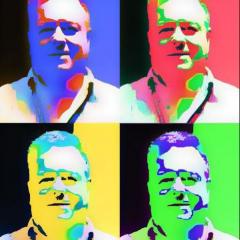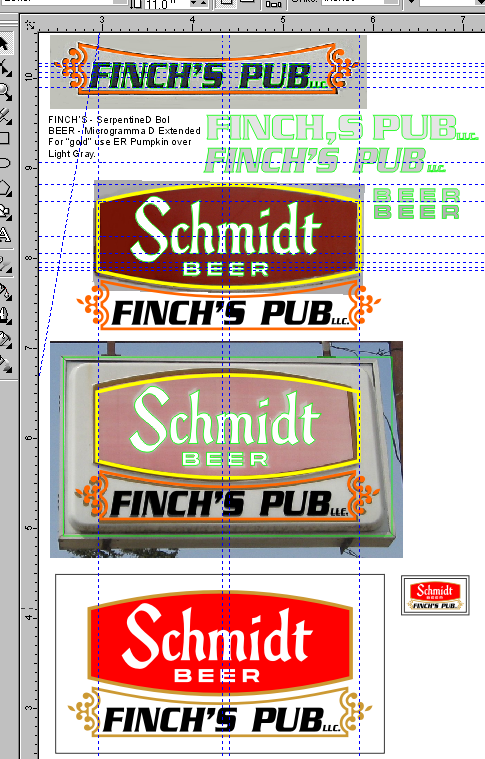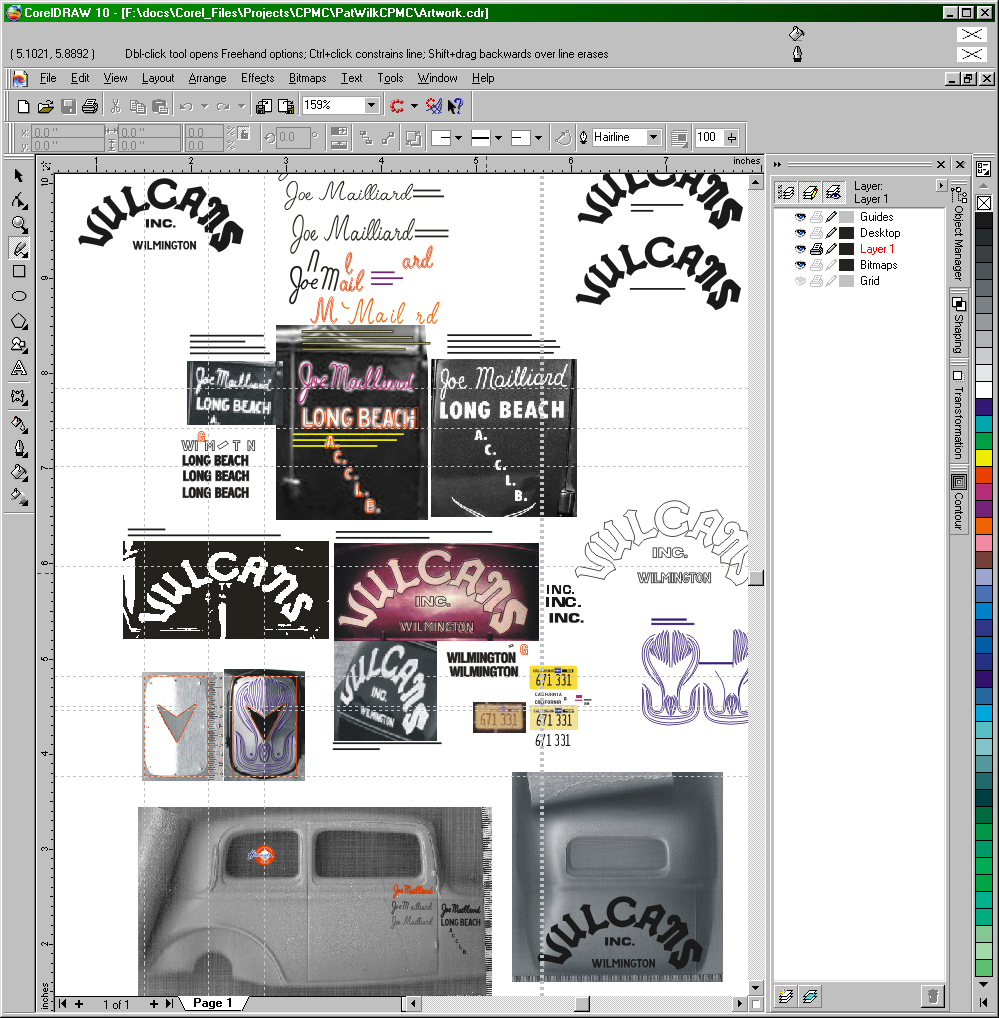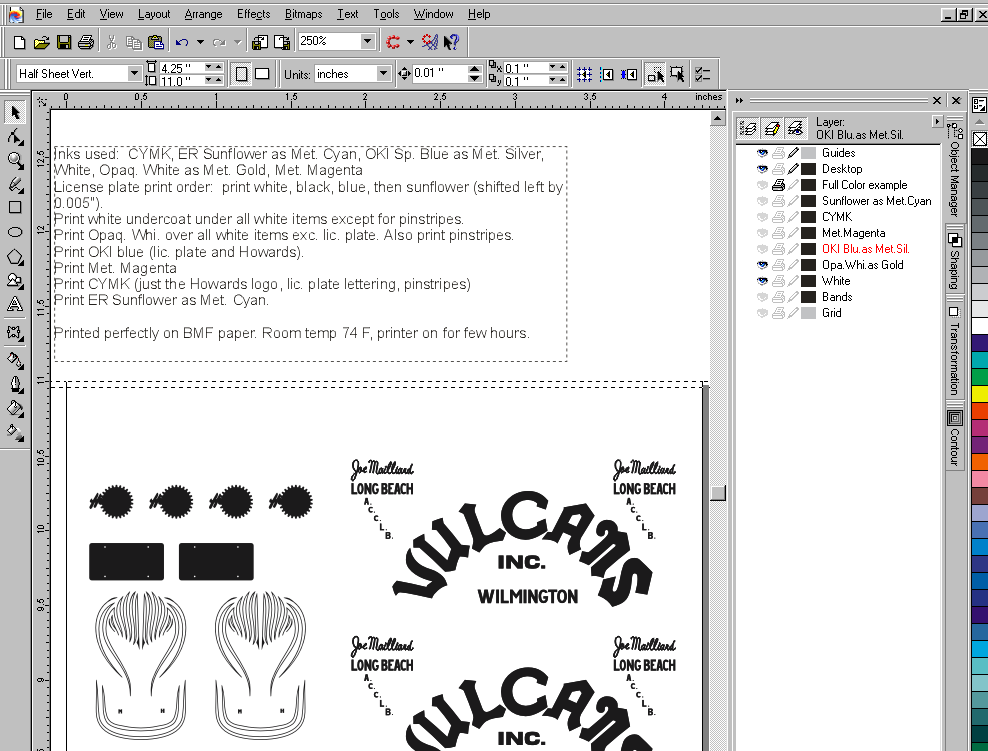-
Posts
9,286 -
Joined
-
Last visited
Content Type
Profiles
Forums
Events
Gallery
Everything posted by peteski
-
I should have also mentioned that while the technique and results are excellent, I am confused by the "Photo Etch Step Pads" subject line. When I brought up the thread I expected some photoetched metal step pads, but the only photoetched thing is a saw blade used as a shaping tool for the plastic steps. "Simple and easy technique for making step pads" would have IMO been more descriptive.
-

LA Awesome for chrome removal
peteski replied to gpal's topic in Model Building Questions and Answers
The residue is likely the gloss clear coat applied to the parts before the metalizing process to produce a mirror-smooth surface. You can try immersing the parts in the LA Awesome for more time (the plastic should not be affected), or try some other stripping liquid (like CSC or the Purple Stuff). -

Can this be cleaned up
peteski replied to junkyardjeff's topic in Model Building Questions and Answers
That is strange. Maybe the yellowing was due to sunlight (UV) exposure and it also affect the clear plastic? I agree that likely the best way to try repairing it will be to use some sort of abrasive method others mentioned, and maybe give it a final coat of Future floor finish (or whatever that stuff is called now, or one of its equivalents). -

Software to create decals
peteski replied to Mike 1017's topic in Model Building Questions and Answers
The ancient Alps MD-5000. There is a online group for Alps owners with about 2400 members. I'm one of the groups owners. https://alps.groups.io/g/ALPS/ -
Excellent technique! Simple and very effective.
-

Can this be cleaned up
peteski replied to junkyardjeff's topic in Model Building Questions and Answers
I'm curious as to how the fogging happened. Going by the shape of the fogged area of the "glass" it seems to have been removed from an assembled model and only and only the the exposed "glass" area got damaged. Could it have just been sprayed with Dullcote? It wouldn't have fogged up like that just by itself. -

Software to create decals
peteski replied to Mike 1017's topic in Model Building Questions and Answers
If you are planning on doing artwork for more than few custom decals I recommend getting and learning any of the many publishing apps available out there. Unlike simple word processors or Power Point apps, publishing software gives you much better control of the graphic objects in your design. It also allows shows you the exact sizes of the objects so you can take guesswork and experimenting with resizing the artwork until it fits. Ability to separate layers is also very helpful. But there is a usually a fairly steep learning curve. However, after you get through that learning curve you will wonder why you were using some primitive software which was never meant for designing things like decal artwork. Software such as Adobe Illustrator, Corel Draw, or a freeware Inkscape will be ideal for artwork design. You don't need the latest and greatest versions. Older versions of this software has capabilities more than adequate for the type of work like decal design. Older versions (including the product key or license) can often be found cheaply on eBay. Try not to get the student editions but full versions. I use a very old Corel Draw versions 10 and 12 (these were new over 20 years ago). I have used Corel Draw since version 3, so that was why I continued to use it. Here are some samples of scratchpad files I used for designing the decal artwork. -
My post was Others before me also echoed the sentiment that judging all kits from company X, strictly based on the company's name doesn't make much sense.
-
I guess you missed my point Les. Asking a blanket statement about quality of model kits from company X to me is not very useful. As I mentioned every kit produces winners and losers as far as their kit's quality and fidelity. Like some Italeri kits are pretty good while others are not so much fun to build. This is especially true when that company X acquires molds from other kit companies (or reboxes such kits) to increase their model range. I merely stated that it makes more sense to ask opinions about some specific kit from company X should produce more accurate/useful type of opinions/reviews.
-
Donny, As I'm pretty sure mentioned it to you in another one of your threads asking opinions about a specific model company in general is probably not the best way to most accurate info. Every model company will have some better and some not-so-good models. I would suggest to ask this question about a specific model from some model company which you are contemplating on building.
-

Issue submitting a new topic?
peteski replied to bh1701's topic in Forum News and Questions (formerly: How To Use This Board)
I guess then my point is that wherever this "protection" occurs, it is a piss-poor way to dealing with the problem. Any app or server which stores member's text messages should accept any English words. My comment is not directed at you - just at the state of of today's computer software. -

Looking For Reccomendations For Decal Paper
peteski replied to oldcarfan's topic in Model Building Questions and Answers
Another vote for Bare-Matal Foil paper. I use the laser paper with my Alps printer. Never tried their ink jet paper but I expect it to work as designed. I was given some Sunnyscopa and while it was impressively thin (I guess the sell different thicknesses), it was difficult to slide of the backing paper to apply. -

Issue submitting a new topic?
peteski replied to bh1701's topic in Forum News and Questions (formerly: How To Use This Board)
I find it really strange that any commercial software (like the one running this forum) would be vulnerable to hacks using some database control commands typed into a post. That is just so nutty. Today's software is so poorly written, it isn't funny. -

Making gold pinstripes Ideas ?
peteski replied to gtx6970's topic in Model Building Questions and Answers
To me it looks like the blue areas are painted and the gold stripe is the applied over the gold. Is the stripe (and lettering shadows) actually metallic gold, or imitation gold or just a non metallic dark yellow/orange paint? -
Matt, I asked how people communicated with Jason, because there are more than one way to do so. Did you use his Gmail email address, or some other way (like a PM through the forum)? If you used his Gmail address with no response to me that would be worrisome as I think that is the most direct way to communicate.
-

Anyone here tried gloss black primer?
peteski replied to Monty's topic in Model Building Questions and Answers
I thought this thread was about using glossy black primer under standard metallic paints used for painting car bodies. That made no sense to me. But when this conversation continued, it appears that the gloss black primer is for use with those special coatings which are designed to replicate look of bare polished metal (chrome, aluminum, stainless steel). That makes perfect sense now because in order for a metallic surface to look polished or reflective it needs to be as smooth as glass. This has been the case since the first such coatings appeared in the market (like Alclad II Chrome). No no glossy surface - no chrome-look. As for calling those paints a "primer" I guess that it is something Stynylrez and Kaleido might have chosen to describe an ordinary gloss black paint they sell. It is basically an undercoat for high-shine metallic finishes, not specifically a primer which improves adhesion to the painted surface. Or are those real primers which do improve adhesion? I guess in the grand scheme of things it doesn't really matter. Alclad II also has a "primers" section on their website, but calls those paints just "Gloss Black Base". https://alclad2.com/finishes/primers-misc/ -

Anyone here tried gloss black primer?
peteski replied to Monty's topic in Model Building Questions and Answers
So metallic paints will "magically" adhere as well to a glossy primer as non-metallic paints to flat/satin finish primer? Interesting . . . -
Mike, I have troubleshoot computers (hardware and software) for decades on a professional level, and from my experience I know that the more details one reveals in their request for help, the more accurate advice they will receive. To me there are no generic questions or answers. Especially when it comes to processes which have many possible combination of chemicals or materials. Different metals might be treated differently for accepting paint. For example brass can be "pickled" in vinegar to prepare the surface for better paint adhesion. Can't do that with stainless steel (well, without chemicals which are not in an average modeler's arsenal). Important thing to remember is to prep the metal parts by making they are free of oil/grease. A rinse or dip in acetone or naphtha will work well. Also while not usually the case nowadays, in the past, brass photoetched parts often had a clear coat which remained after the etching process. That could be left on them as a primer coat for the paint to stick to. In my experience, water-based paints (you didn't specifically state which Tamiya paint line), don't adhere well to any bare metals. Organic solvent based (stinky) paints can adhere to bare metal quite well, but as Bill mentioned, first using a self-etching or aka. etching primer will improve adhesion of any paints. Those primers are usually sold in auto body supply shops and might also be available in general auto parts stores.
-
What kind of photo-etched parts are we talking about? In automotive model hobbies photoetched parts are usually left in their bare metal state (things like grilles, scripts, emblems, steering wheel spokes, etc.) I also recall that you dabble in model aircraft? Is that what those parts are for? Are those parts brass or stainless steel? What specific brands of paints will you be using?
-

Printing Removal
peteski replied to Chariots of Fire's topic in Model Building Questions and Answers
Charlie, you stated "repaint and re-decal", but then you mention just removing the lettering. If you need to remove it all to bare metal then any of the commercial paint stripping solutions should work without damaging the diecast metal. If you want to retain the paint and just remove lettering, things can get a bit more complicated. The old-fashion Tampo printed lettering might come off using Naphtha or even strong decal setting solution (like Walthers Solvaset). Just place a small swatch of plain Kleenex tissue or non-quilted toilet paper over the lettering and soak it with one of those solvents. Let is sit for a while then try to rub the lettering off. But many of the recently produced models are lettered using ink-jet printers and UV-cured opaque inks. Those are really difficult to remove. -
That's a one expensive video!!
-
If this is a scam and you paid with a credit card, they now have your credit card info.







